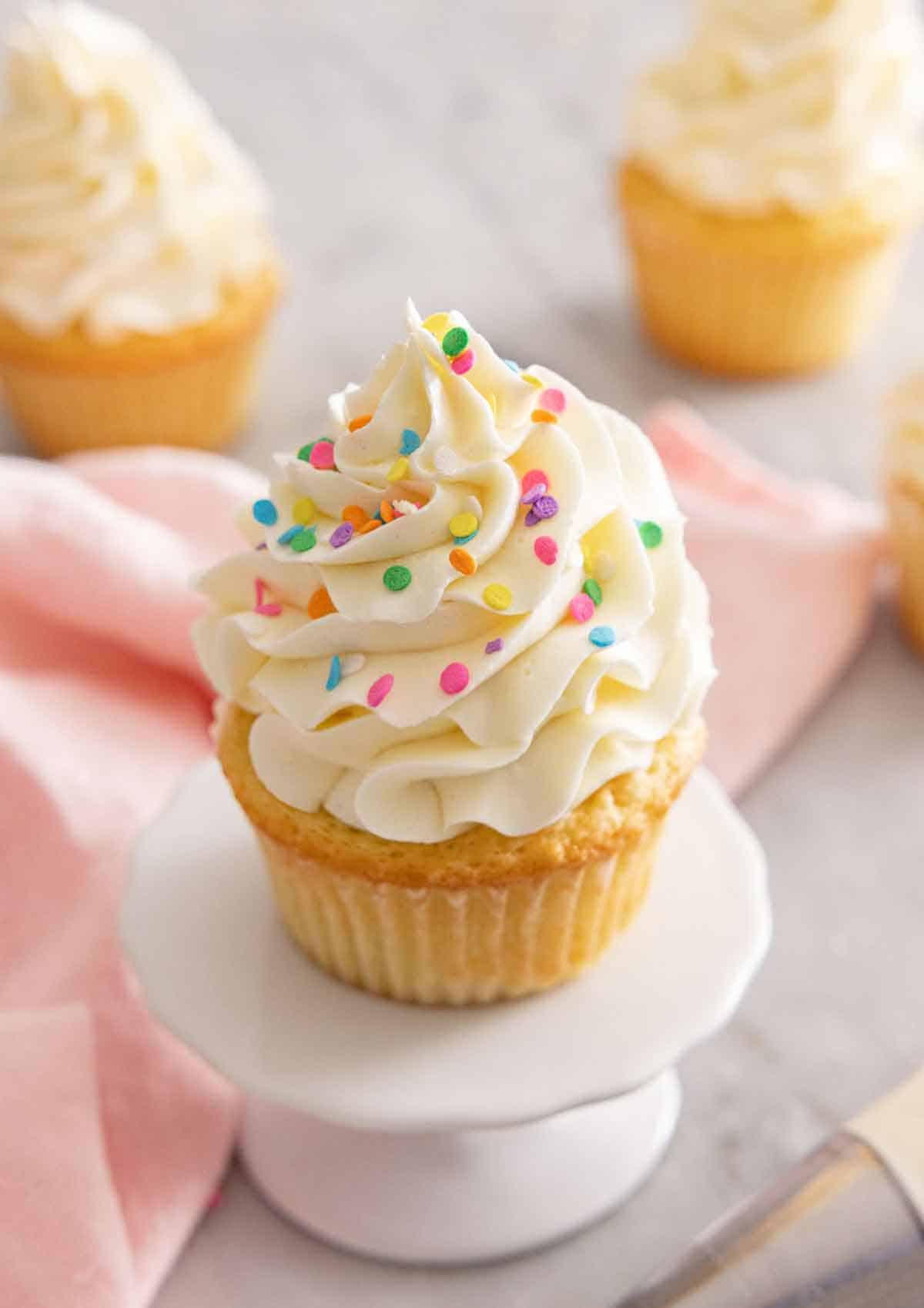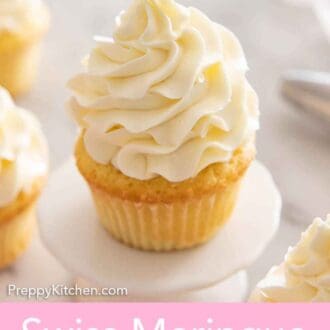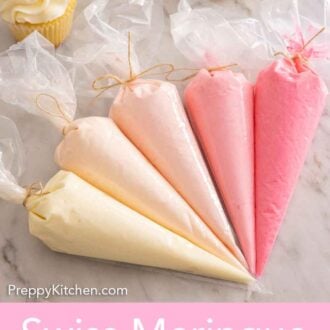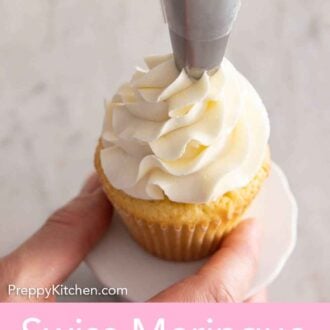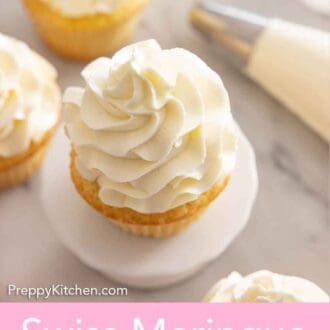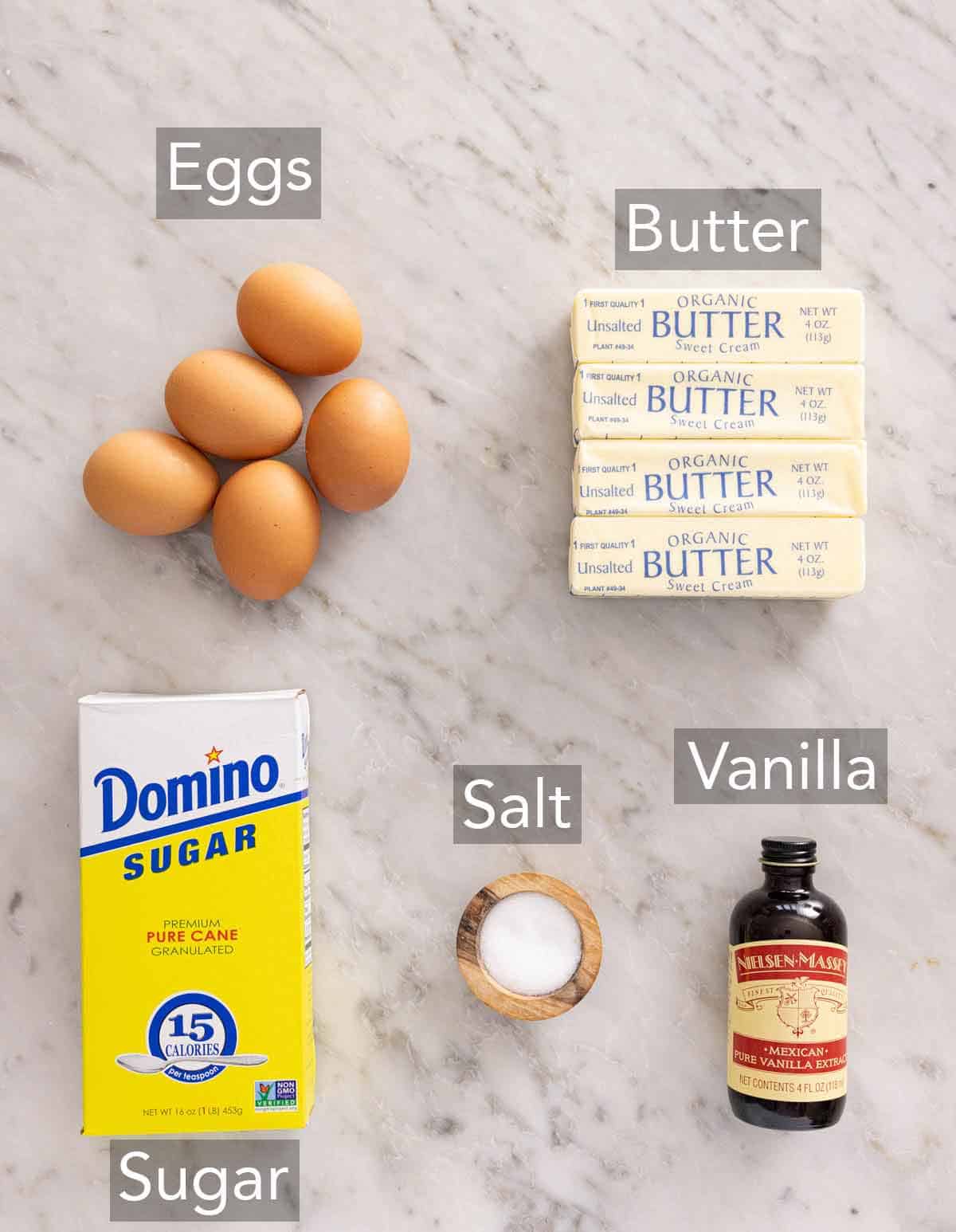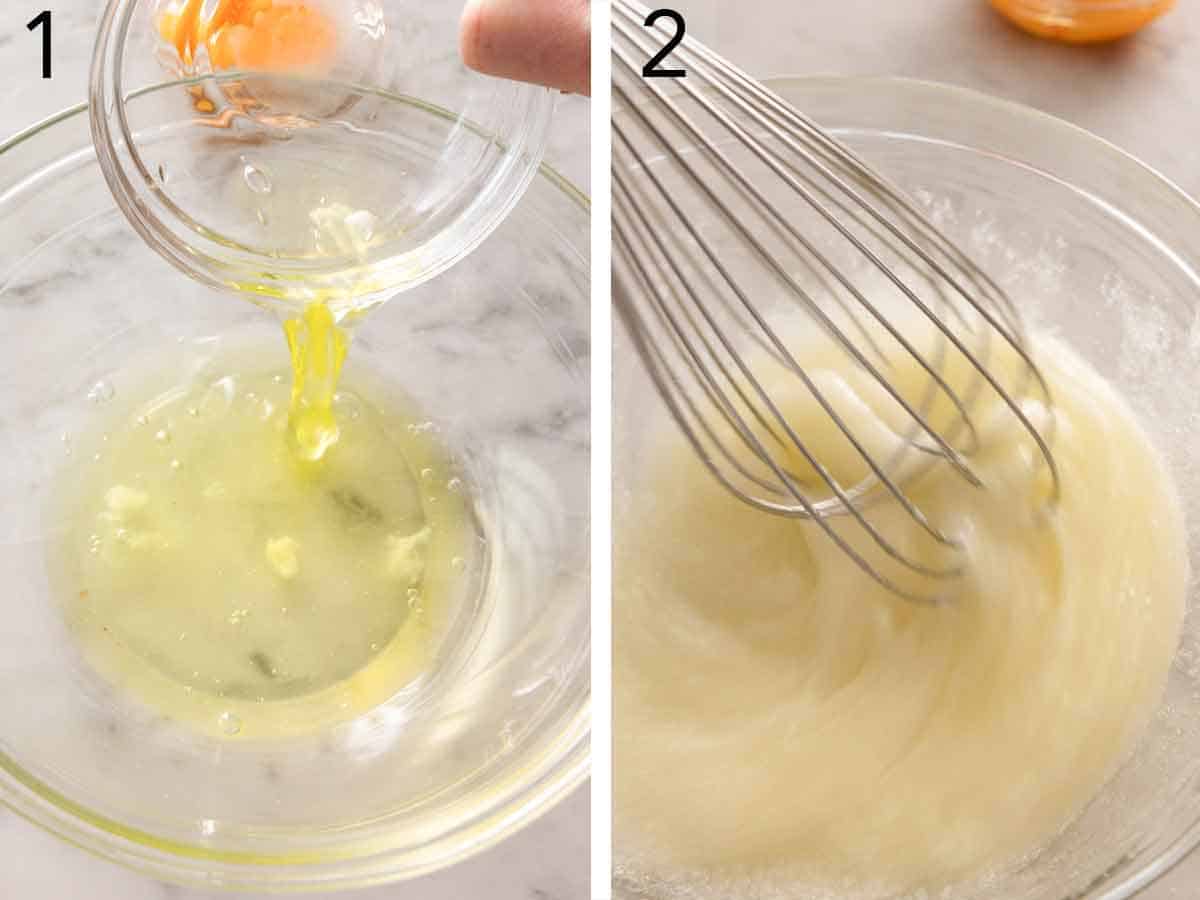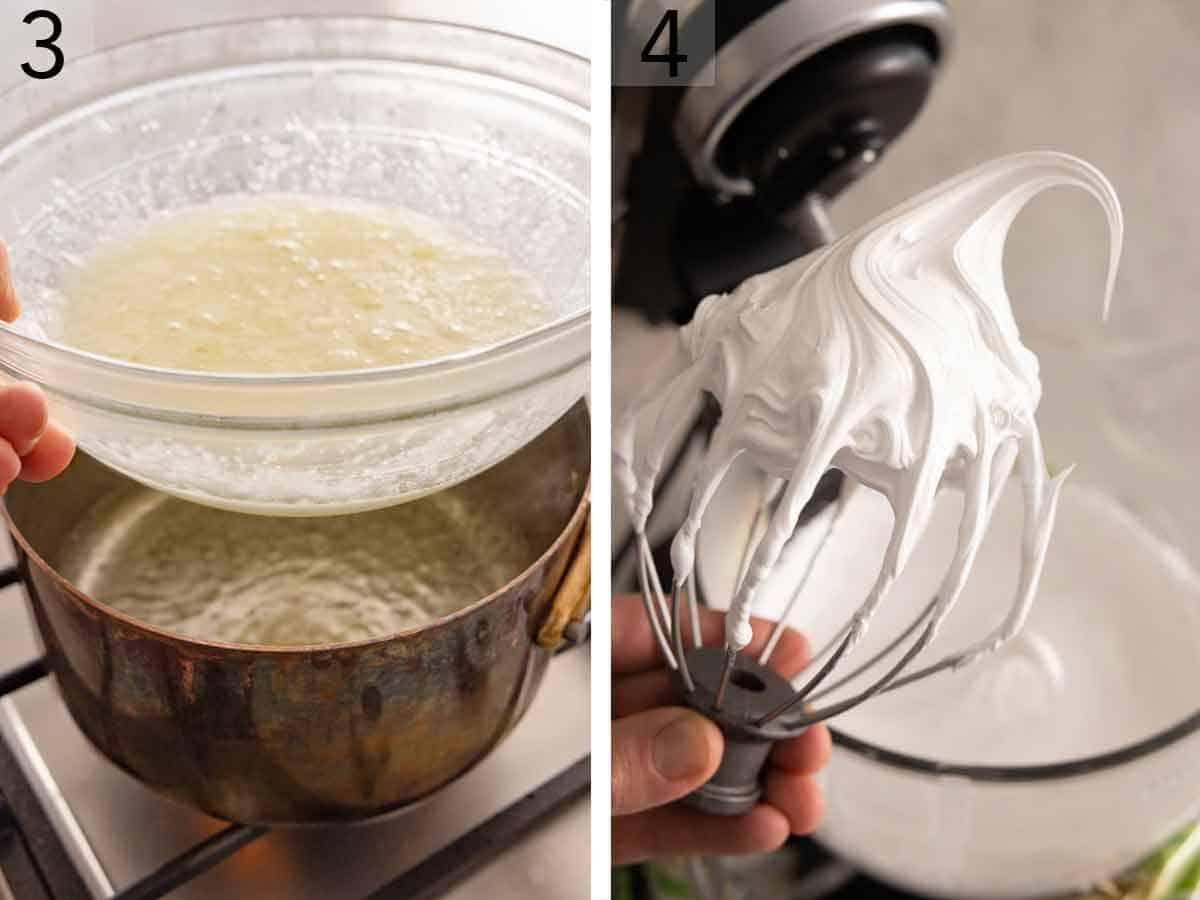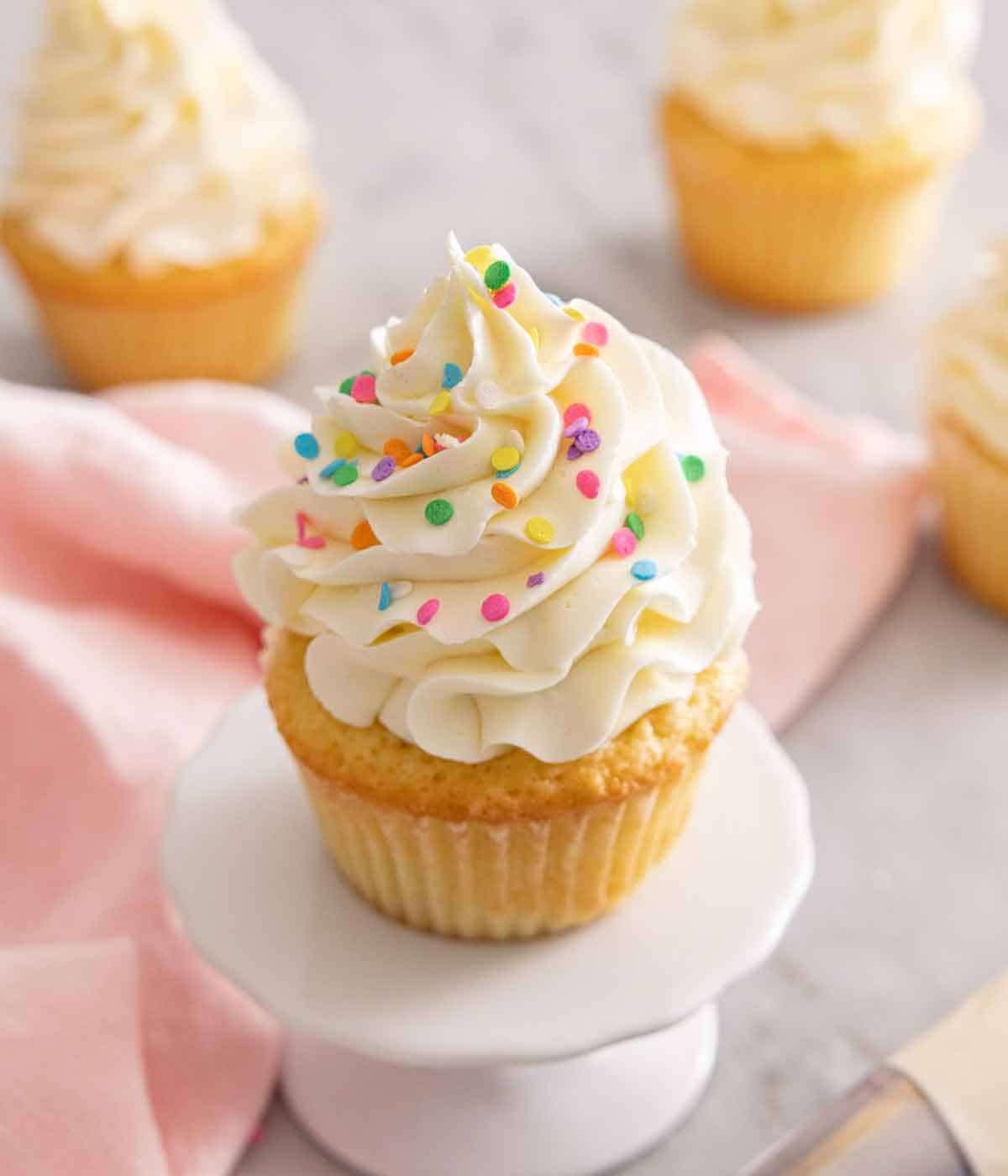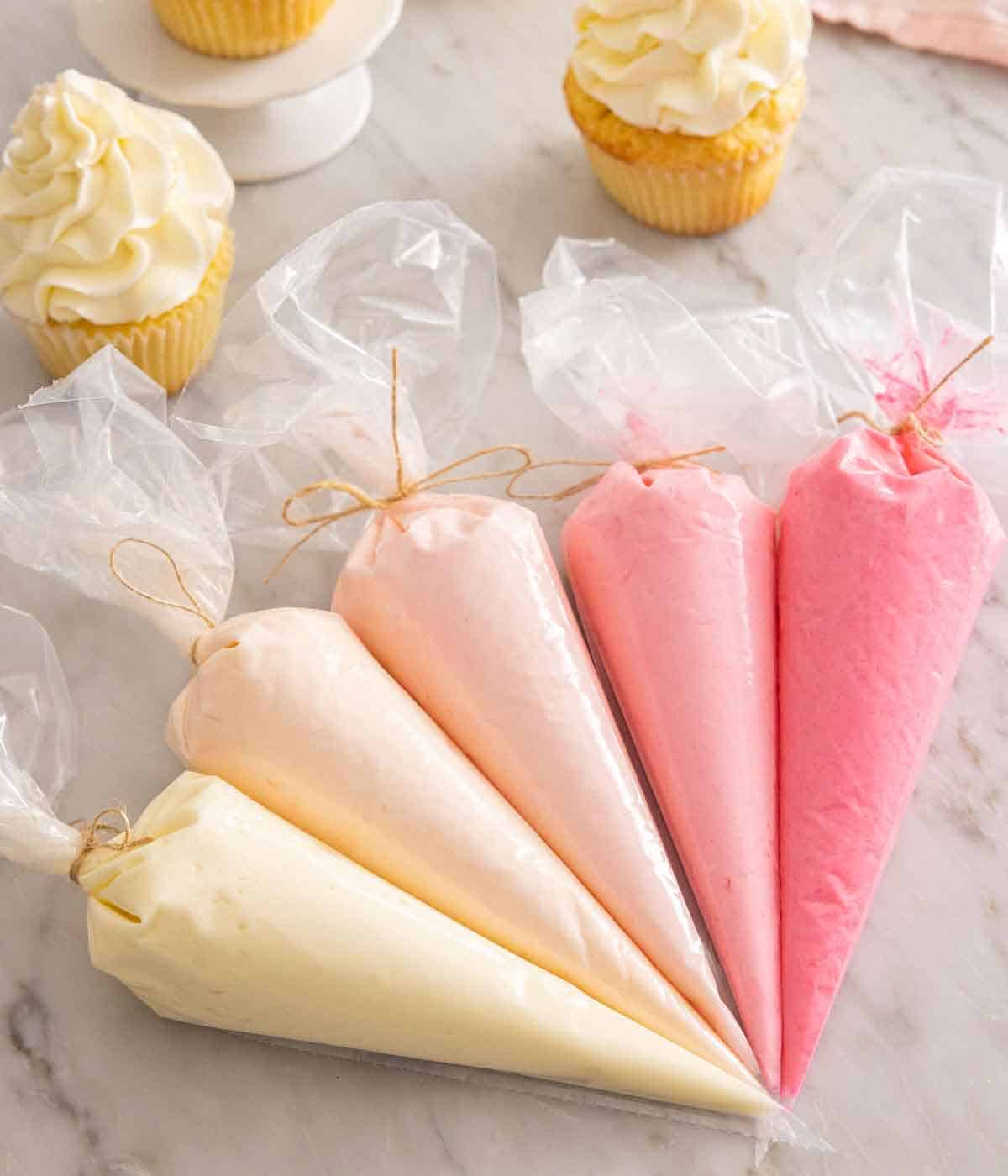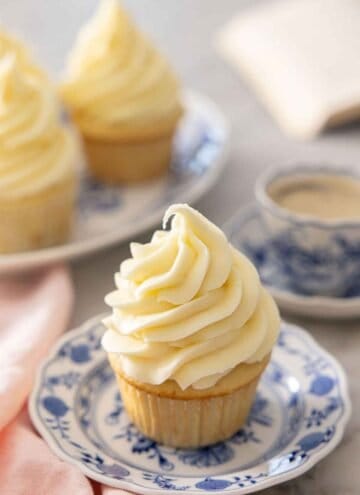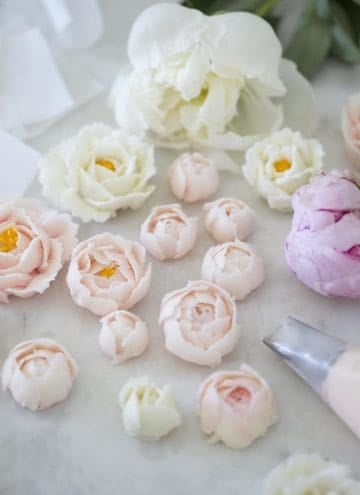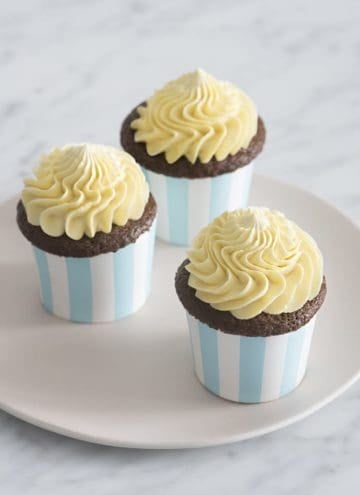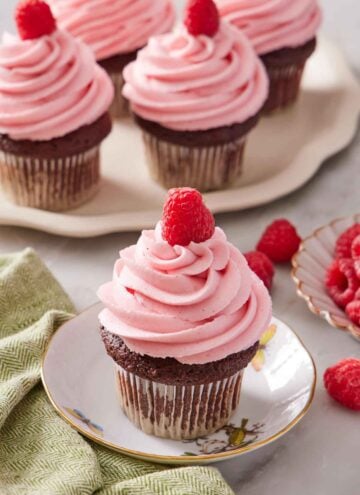Swiss meringue buttercream, also shortened to SMBC, is a buttercream frosting recipe that is creamy, thick, buttery, and holds its shape well. This meringue buttercream comes together easily with only cooked egg whites and sugar, butter, vanilla extract, and salt. It is silky but stable, making it perfect for piping it, making decorations with it, or spreading it over a cake. It can also be made ahead of time and frozen for another day.
Unlike American buttercream, this version is not overly sweet, making it a crowd-pleaser. This light and airy SMBC can sometimes be tricky, but it’s worth the effort! This tutorial will teach you everything you need to know to make the best Swiss buttercream in no time. In a pinch and need something quick and fast? Try my vanilla buttercream frosting or chocolate buttercream frosting instead!
What You Need to Make This Recipe
Eggs — I highly recommend using fresh eggs instead of carton egg whites for this buttercream recipe, as it whips up much better. Save your egg yolks for another recipe, such as my easy crème brûlée recipe!
Butter — butter is what turns your Swiss meringue into a meringue buttercream. It’s essential to have room temperature butter, so it incorporates effortlessly into the meringue. Make sure to buy unsalted butter, not salted.
Sugar — you must use granulated sugar. You cannot swap for powdered sugar for this buttercream recipe.
Vanilla — as the main flavor component, I highly suggest using the highest quality real vanilla extract for the best flavor.
How to Make Swiss Meringue Buttercream
1. Add egg whites, sugar, and salt to a large bowl.
2. Whisk everything together.
3. Place the bowl over a pan of simmering water. Make sure the water does not touch the bowl.
Whisk the egg whites occasionally while it warms up. When the mixture has warmed, whisk it constantly until it reaches an internal temperature of 160ºF or until it’s not grainy between your fingers. Transfer the bowl to the mixing bowl of a stand mixer, and mix with a whisk attachment until you get room temperature glossy peaks.
4. Switch to a paddle attachment and while the mixer is running on low, add tablespoon-sized dollops of room temperature butter, making sure to let the butter incorporate before you add the next piece. Add the vanilla extract and whip until combined. Transfer to a piping bag or ziptop bag to store.
Pro Tips for Making This Recipe
- It is essential to have a clean and dry bowl for whipping the egg whites. The egg whites cannot contain any egg yolk whatsoever. If the bowl is not completely clean or yolk-free, it prevents your meringue from setting up.
- If your equipment or bowl has grease on it, wipe down everything with lemon juice or vinegar.
- Eggs are easier to separate when cold, but egg whites whip up easier when closer to room temperature. I recommend separating them in advance if you have the time. In addition, allowing the egg whites to sit gives them a chance to relax, which improves their elasticity during the whipping process.
- It is entirely normal for the SMBC to look soupy or curdled after adding the butter. Not to worry, just continue to let it whip, and it’ll come together at the end.
- If the mixture does not come together and stays curdled after 5 to 10 minutes, you can place the mixing bowl over a simmering pot to let the edges of the meringue warm up before continuing to mix it.
- Keep in mind that, like all buttercream, this recipe uses butter. This means if it is humid or hot, the buttercream will melt.
- If your mixer’s motor is starting to overheat, you can give the mixer a break by placing the whisk or paddle attachment in the mixing bowl and placing everything into the fridge for 20 to 30 minutes.
Frequently Asked Questions
What is the difference between this and buttercream?
This Swiss meringue buttercream recipe involves using a double boiler, eggs, and regular sugar. A regular American buttercream recipe does not require you to whip or cook egg whites, and instead of regular sugar, it uses powdered sugar.
What is the difference between Swiss and Italian buttercream?
The two buttercreams are pretty similar, but an Italian buttercream recipe is more stable. This is due to boiling sugar to the hard crack stage (240F) and then adding it to your whipping egg whites. This method yields an extremely firm meringue.
Will meringue buttercream crust?
Unlike American buttercream, this SMBC recipe does not dry out or crust, making it easy to work with and yields a perfectly smooth finish on your cakes.
Can I make this ahead of time?
You sure can! You can leave the SMBC at room temperature for a day or two. If you want to make it further ahead of time, refrigerate the Swiss buttercream for up to two weeks, or freeze it for up to 3 months. The butter in the buttercream will solidify in the fridge, so you must bring the buttercream to room temperature and re-whip it before using it.
Is this safe to consume?
Yes, this buttercream is safe to consume as long as the eggs reach 160F. Please consult with your doctor if you are unsure.
Can I add flavors?
You can swap out the vanilla extract for a different extract such as almond extract, lemon extract, orange extract, maple, and more!
Can I add colors?
If you would like to add color, add gel food coloring to the buttercream after adding the vanilla extract. Gel food coloring ensures you are not adding liquid to the mixture.
If you’ve tried this Swiss Meringue Buttercream recipe, then don’t forget to rate the recipe and let me know how you got on in the comments below, I love hearing from you!
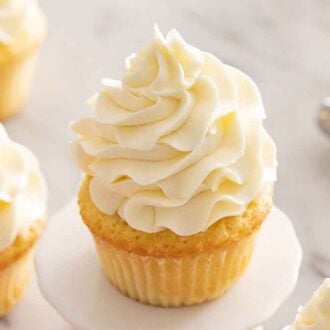
Swiss Meringue Buttercream
Video
Equipment
- Stand mixer
Ingredients
- 5 egg whites at room temperature
- 2 cups unsalted butter 452g, at room temperature
- 1 ½ cups granulated sugar 300g
- 1 pinch kosher salt
- 1 tsp vanilla extract
Instructions
- Add egg whites, sugar and salt in a bowl.
- Give the mixture a brief whisk.
- Place the bowl over a pan of simmering water. Make sure the water does not touch the bowl.
- Whisk the egg whites occasionally while it warms up. When the mixture has warmed, whisk it constantly. You will heat the mixture until it reaches an internal temperature of 160ºF or until it's not grainy between your fingers.
- Transfer the bowl to a stand mixer, mix with a whisk attachment until you get room temperature glossy peaks.
- Switch to a paddle attachment and while the mixture is running on low, add tablespoon sized dollops of room temperature butter making sure to let the butter incorporate before you add the next piece.
- Once all the butter is incorporated, go ahead and add the vanilla extract. You can transfer it to a piping bag or to a ziplock bag to store in the refrigerator or freezer.
Notes
- It is essential to have a clean and dry bowl for whipping the egg whites. The egg whites cannot contain any egg yolk as well. If the bowl is not completely clean or yolk-free, it prevents your meringue from setting up.
- If your equipment or bowl has grease on it, wipe down everything with lemon juice or vinegar.
- Eggs are easier to separate when cold, but egg whites whip up easier when closer to room temperature. I recommend separating them in advance if you have the time. In addition, allowing the egg whites to sit gives them a chance to relax, which improves their elasticity during the whipping process.
- It is entirely normal for the SMBC to look soupy or curdled after adding the butter. Not to worry, just continue to let it whip, and it’ll come together at the end.
- If the mixture does not come together and stays curdled after 5 to 10 minutes, you can place the mixing bowl over a simmering pot to let the edges of the meringue warm up before continuing to mix it.
- Keep in mind that, like all buttercream, this recipe uses butter. This means if it is humid or hot, the buttercream will melt.
- If your mixer’s motor is starting to overheat, you can give the mixer a break by placing the whisk or paddle attachment in the mixing bowl and placing everything into the fridge for 20 to 30 minutes.



